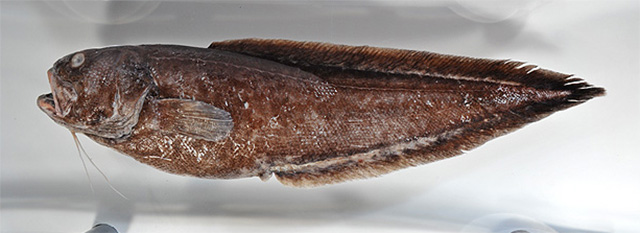| Ophidiidae (Cusk-eels), subfamily: Neobythitinae |
| 55.8 cm SL (male/unsexed) |
|
demersal; marine |
| Northwest Pacific: Sagami Bay, Japan. |
|
Dorsal soft rays (total): 94-94; Anal soft rays: 79; Vertebrae: 53-53. Rather elongate body with blunt head; eye almost as long as snout; upper jaws ends well behind eye; 3 sharp spines on preopercle and 1strong opercular spine; 1 median and a pair of basibranchial tooth patches; 5-6 developed rakers on anterior gill arch; pelvic fins inserted beneath eye and extended well beyond head; precaudal vertebrae 13 (Ref. 34024). Snout spine present (Ref. 34024). |
| Rare species (Ref. 34024). Reproductive strategy possibly similar to other members of this family featuring oviparity, with oval pelagic eggs floating in a gelatinous mass (Ref. 205). |
|
Least Concern (LC); Date assessed: 16 August 2019 Ref. (130435)
|
| harmless |
Source and more info: www.fishbase.org. For personal, classroom, and other internal use only. Not for publication.

